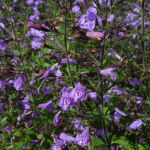| Common Name: |
Lesser Calamint |
| Other Names: |
Nepitella |
| Botanical Name: |
Calamintha nepeta syn. C. nepetoides |
| Genus: |
Calamintha |
| Family: |
Lamiaceae |
| Cultivation: |
Well-drained to dry, neutral to alkaline soil in sun. |
| Propagation: |
By seed sown under cover in spring or autumn; by softwood cuttings in early summer; by division in spring. |
| Harvest: |
Flowering plants and leaves are cut in summer and used fresh, or dried for infusions. |
| Native Location: |
Europe, S Russia, N Africa, Iran. |
| Height: |
45cm (18in) |
| Width: |
50-75cm (20-30in) |
| Variations: |
Subsp. nepeta
Is larger in all its parts
Height: 45-60cm (18-24in)
Width: 60-90cm (24-36in)
Subsp. nepeta 'Blue Cloud'
Has blue flowers
Height: 45-60cm (18-24in)
Width: 60-90cm (24-36in) |
| Hardiness: |
Z5-10 |
| Parts Used: |
Whole plant |
| Properties: |
An aromatic herb that acts as a nerve tonic, increases perspiration, stimulates the uterus, and relieves indigestion. |
| Medicinal Uses: |
Internally for indigestion, nervous tension, depression, insomnia, feverish colds, and painful menstruation. Not given to pregnant women. |
| Culinary Uses: |
Leaves can be used for flavoring; they are similar in aroma to those of common calamint, but more pungent. |
| Bibliography: |
Encyclopedia of Herbs by Deni Brown. Copyright © 1995, 2001 Dorling Kindersley Limited. pg 149
|

